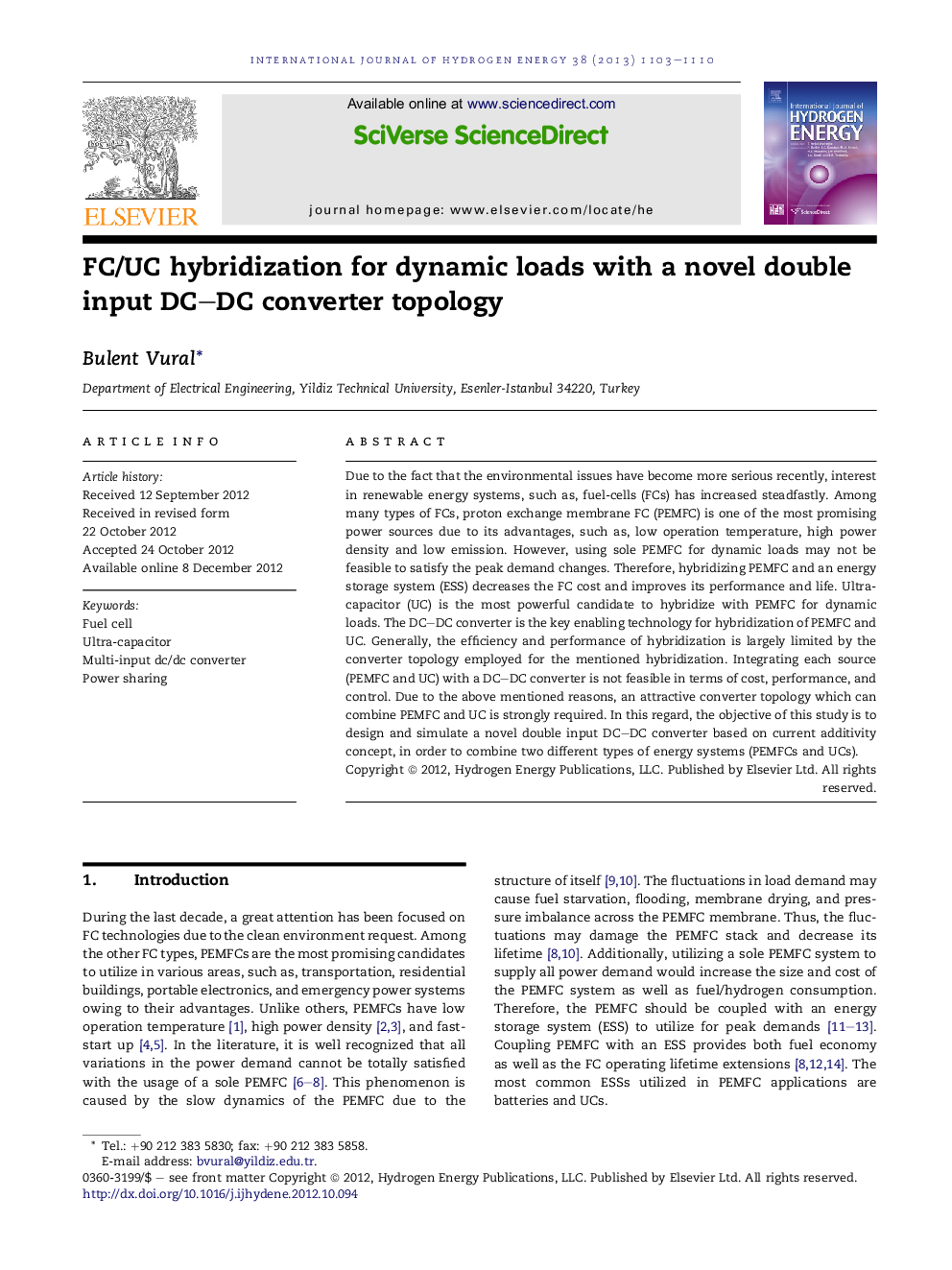| Article ID | Journal | Published Year | Pages | File Type |
|---|---|---|---|---|
| 1282077 | International Journal of Hydrogen Energy | 2013 | 8 Pages |
Due to the fact that the environmental issues have become more serious recently, interest in renewable energy systems, such as, fuel-cells (FCs) has increased steadfastly. Among many types of FCs, proton exchange membrane FC (PEMFC) is one of the most promising power sources due to its advantages, such as, low operation temperature, high power density and low emission. However, using sole PEMFC for dynamic loads may not be feasible to satisfy the peak demand changes. Therefore, hybridizing PEMFC and an energy storage system (ESS) decreases the FC cost and improves its performance and life. Ultra-capacitor (UC) is the most powerful candidate to hybridize with PEMFC for dynamic loads. The DC–DC converter is the key enabling technology for hybridization of PEMFC and UC. Generally, the efficiency and performance of hybridization is largely limited by the converter topology employed for the mentioned hybridization. Integrating each source (PEMFC and UC) with a DC–DC converter is not feasible in terms of cost, performance, and control. Due to the above mentioned reasons, an attractive converter topology which can combine PEMFC and UC is strongly required. In this regard, the objective of this study is to design and simulate a novel double input DC–DC converter based on current additivity concept, in order to combine two different types of energy systems (PEMFCs and UCs).
► A bi-directional, double input dc–dc converter is provided for FC/UC hybridization. ► The converter can keep the bus voltage within the preset limits for dynamic load. ► The topology provides a good performance from the point of view of load sharing.
